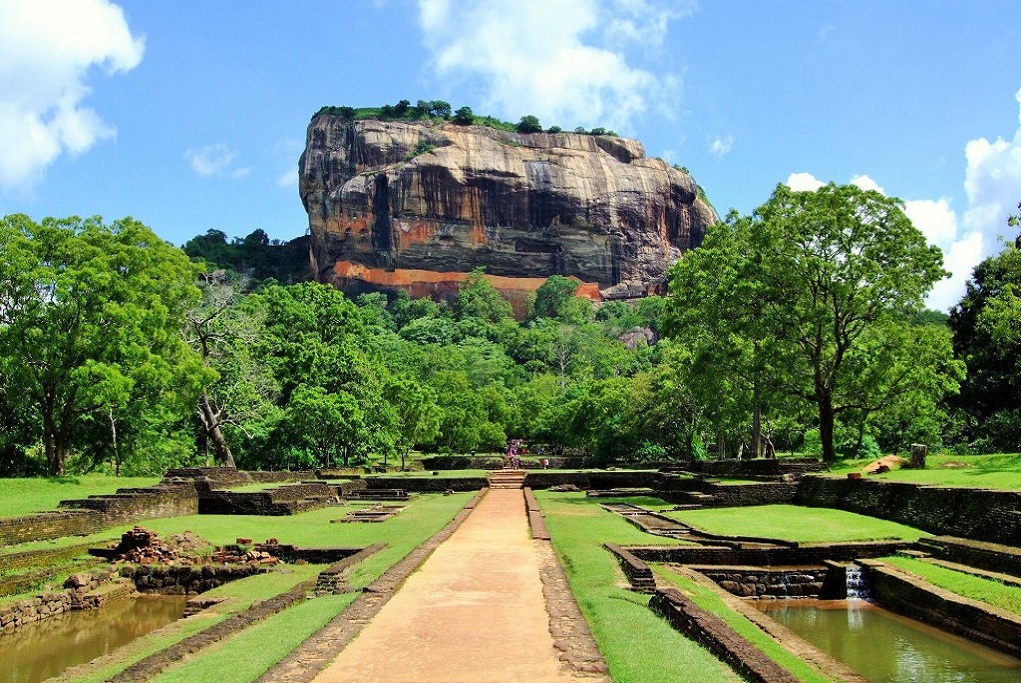Yes, the locals refer to the Sigiriya “Lion’s Rock” as the Eighth Wonder of the World. This is an ancient palace and fortress complex which holds significant importance in terms of archaeology and attracts several thousands of visitors annually. In all of Sri Lanka, Sigiriya is probably the most popular tourist attraction.
King Kasyapa built this palace complex not just as a place to live, it was a massive construction planned to glorify Kasyapa himself. The fortress was used to display his importance as a ruler and to present himself from up there with the concept that he was a living God staying on the summit of a huge rock.
Located exactly in the heart of the island, the palace is built on a rocky plateau that is 370 meters above sea level. This plateau was formed from an extinct volcano and is 200 meters higher than its neighboring jungles. Surrounding the fortress complex is a widespread network of extensive strengthening; including ponds, canals, massive gardens, alleys and fountains. Before Kasyapa decided to construct a palace, the rocky plateau served as a monastery. After his reign, the palace became a Buddhist monastery again until the 14th century and then it was abandoned.
The gorgeous paintings, of which we only see a fraction today, were celestial maidens while the mirror wall was a structure that reflected the red arsenic fields of the kingdom of God Kuvera. The Lion, whose feet you see just before the final ascent, is a part of the fields where the Lions fought.
The western wall of the rock is covered by frescoes that were engraved during Kasyapa’s time. Only 18 frescoes are visible today however. These frescoes are drawings of nude females who are possibly portraits of Kasyapa’s wives or priestesses who performed religious rituals. Although the true identity is unknown, these frescoes have unique historical significance in terms of celebrating female beauty.
Another popular feature of this construction is the mirror wall. During the Kings reign, the wall was thoroughly polished and the King could actually see his reflection in it. After Kasyapa’s reign, the mirror wall was used as an inscription site for visitors of Sigiriya. The most ancient inscriptions are as old as the 8th century, proving that the site has been a tourist destination for over a thousand years. Today however, inscriptions are strictly prohibited on the mirror wall.
The construction of this palace and fortress complex is a fine example of urban planning. In 1982, UNESCO declared this as a World Heritage Site and Blue Lanka Tours has always included Sigiriya on their list of must visit places in Sri Lanka. To locals, it still proudly remains as the Eighth Wonder of the World.

